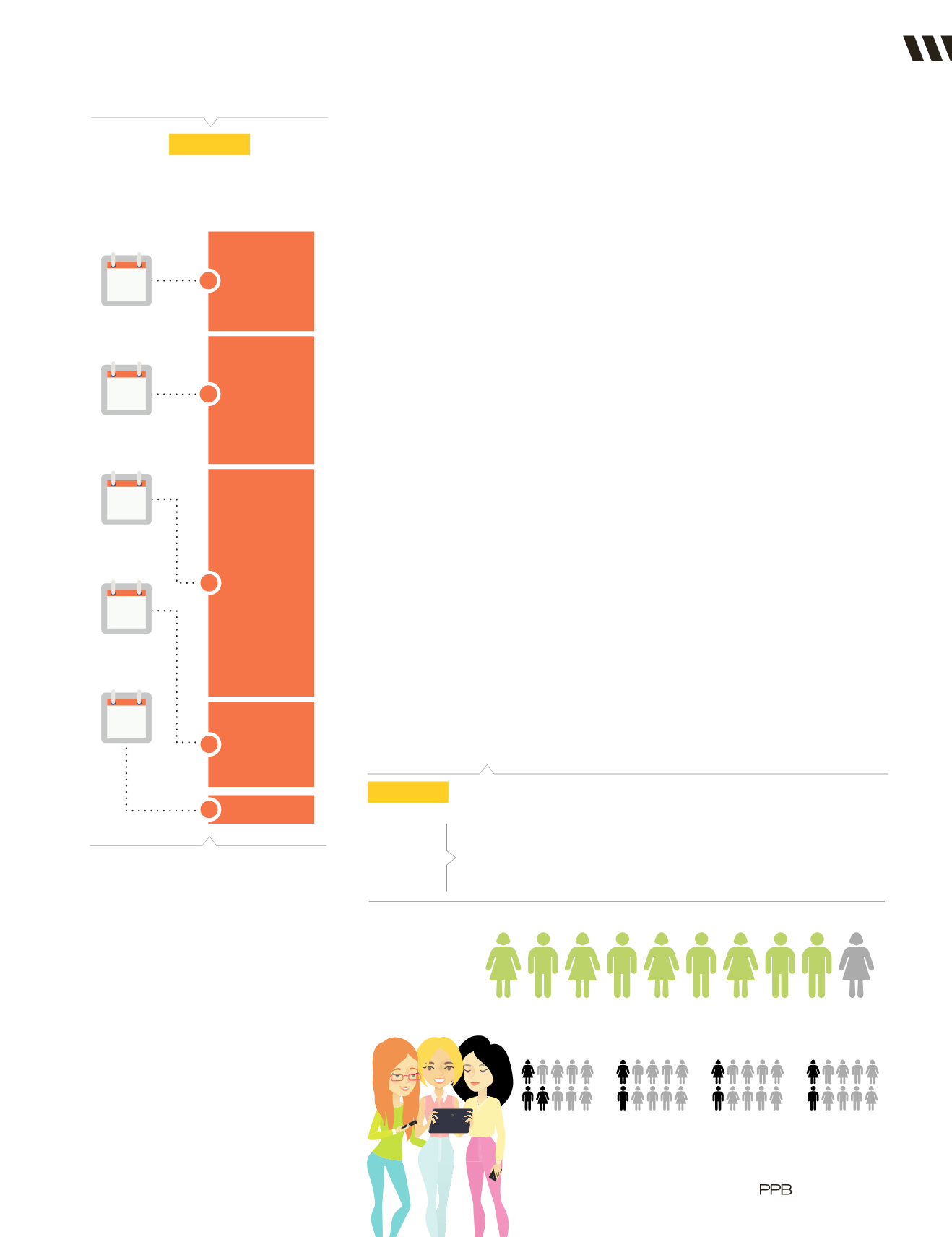

|
JUNE 2017
|
81
PPAI Exclusive Research
|
FEATURE
a day. The longer a promotional product
is kept, the longer a brand’s message is
communicated. And if a recipient does not
want or need the promotional product,
eight in 10 pass it along (nearly seven in 10
give it to someone they know, and one in
three will donate it) ultimately furthering
the brand’s reach.
Because of their extended shelf life
and their ability to be used in everyday
activities, promotional products allow
consumers an opportunity to absorb the
content at the pace and time they choose.
This presents a greater opportunity for
brands to engage with consumers without
forcing unsolicited advertising.
The race to win the consumer path to
purchase is contingent on consumers
being able to actually remember the
brand at the point of purchase. If they
can’t recall a brand, they are less likely to
buy the brand. Ensuring recall relies on
building consumer memory, which can
be carried out by brand exposure (through
advertising) or brand experience (through
using the brand’s products or services).
Promotional products have an upper hand
on other forms of advertising because
they are the only medium that offers
an additional opportunity to heighten
consumer memory. By replacing everyday
items they are already using with branded
promotional products, advertising assumes
a more functional role in consumers’
everyday lives. This heightens both brand
exposure and brand experience, allowing a
greater memory recall.
The PPAI study shows nine in 10
consumers recall the branding on
promotional products they have
received—and it’s 67 percent higher than
broadcast advertising and 78 percent
higher than online, print and mobile
advertising. It’s clear that promotional
products pave the way for brands on the
consumer path to purchase.
Reaction measures
consumer purchase
influence
, which are actions taken as a
result of advertising; however, there is
no longer one large platform holding
the majority of consumer influence.
Marketers are now faced with a consumer
group seeking to enrich themselves and
explore their interests so they can build
and pursue their purpose. They don’t just
consume; they create their own content
and curate that of others at lightning
speed. And now, more than ever, they
are spoiled with the means to do so. As a
result, consumers are choosing to engage
only with content that is personally
relevant to them, their passions and their
purpose. This new consumer mindset
directly translates in the consumer path
to purchase—consumers shop with the
same purpose they consume and the path
to purchase becomes the consumer’s path
to purpose.
To remain competitive, advertising
must relate to the target audience and
provide purpose. This allows a greater
opportunity to facilitate engagement
and build consumer trust, leading to
purchase. Promotional products engage
Figure 7.
Number Of Years
Promotional Products
Are Kept
11
+
YEARS
6-10
YEARS
1-5
YEARS
LESS
THAN A
MONTH
5
%
14
%
22
%
41
%
18
%
LESS
THAN A
YEAR
Figure 8. Consumer Recall Metrics
RECALL
(r
‘
kôl)
noun
1. An advertising medium’s ability to prompt brand recall.
verb
2. Capturing brand staying power in consumer memory.
9
IN
10
Number of consumers
who remember the brand
from the promotional
product they received.
Number of consumers who remember speci c advertisers when using these types of media:
PROMOTIONAL
PRODUCTS
3
IN
10
BROADCAST
2
IN
10
ONLINE
2
IN
10
2
IN
10
MOBILE
















